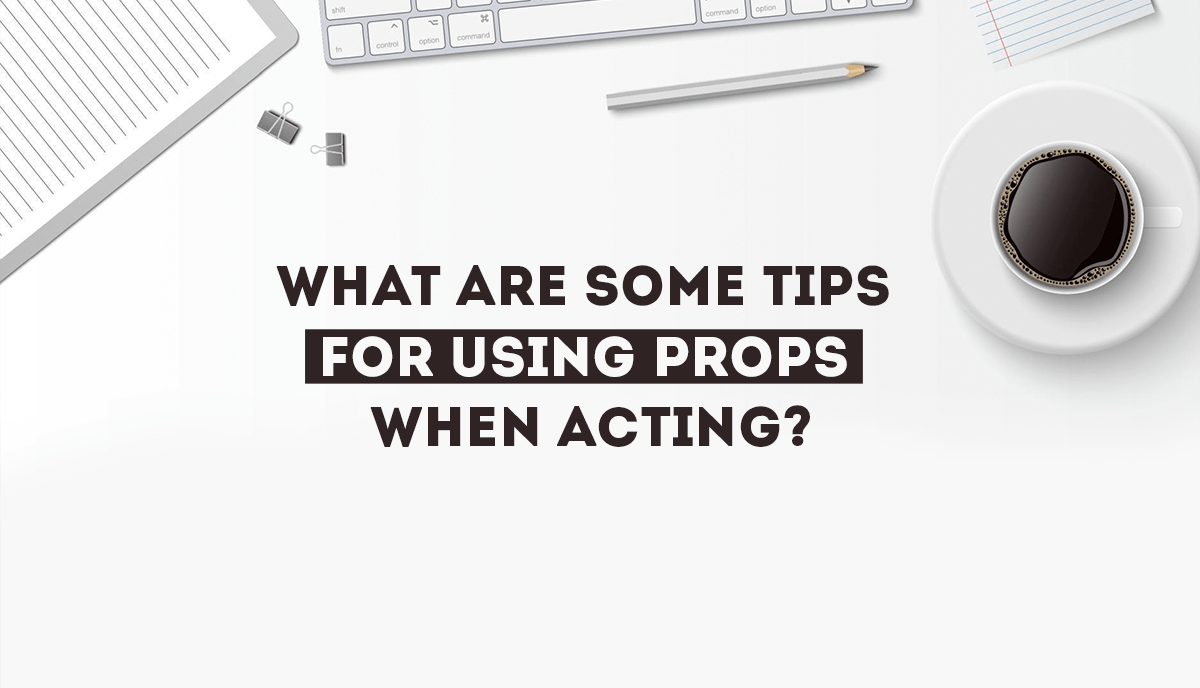Some Tips for using props in acting:
Some helpful Tips for using props in acting are here:
Get knowledgeable with the prop: Know what it does, why it is there, and what it is used for. It makes you comfortable and easy-going with the props during the show.
Stay consistent: It means to keep the continuity in using the prop throughout the performance. Continuity helps keep up an illusion of the scene and keeps it reasonable.
Secure use of prop: Be aware of the safety problems with the prop. In case it is a dangerous prop, practice using it safely to avoid casualties during the performance.
Feedback and Rehearsal: Get feedback from the directors or other actors on how well you are utilizing your prop. So, you will need to rehearse with the prop very much to feel comfortable and confident in its usage.
Following these Acting props tips, one can effectively use props to act out roles more efficiently to the audience.
As far as Acting prop tips are concerned, always fully become your character when working with props. Know the reason your character touches or handles every prop; make sure to move around props as easily as possible; collaborate with other actors so that trading of items with other actors goes fluently, involve props in such a way that they enhance the scene and capture the audience’s attention. If you delve deep into your character’s world and bring on interaction with props effectively, then you have a better chance of raising the level of authenticity and leaving an impression on your stage performance.
The important thing when acting with props is adopting the prop, making it part of you and the scene. Acting with props advice is at your disposal hereafter:
- Pay attention to the physicality of the props and how the size, weight, and even the texture of an object affect your actions and motions.
- Stay focused, while using props, on the scene, and always on your scene partner; the prop should improve not distract from the telling of the story.
How to use props in theater?
Using props in theater can be one of the best ways to tell a story and bring scenes to life. So, if you are questioning, How to use props in theater? Here are some tips on how to practically use props in theater:
Understand the purpose: Know why the prop is there in the scene. Understand its importance and how it relates to telling the whole story.
Merge organically: Let the prop work organically into the character’s actions or interactions. Make it feel like a natural part of the scene.
Enhance the Scene: Let it develop the scene and your character. It shall support dialogue and feelings, improving the performance in general.
Institution and attention to detail are the main things in Props management in acting. Listed here are a few of the tips that will help you manage props effectively during the performance:
- Always consider labeling or marking the props so that they can be identified easily in the backstage area. This will avoid mess or confusion when there are quick changes.
- Organize all props on a prop table backstage in the order they will be used. This can be very helpful during scene changes when you need to find and pick up the proper prop in an urgency.
- Keep open lines of communication with the prop master or stage manager about the proper placement of props and any special handling requirements. This allows for smoothness in the prop administration processes.
Using props effectively in theater means being conscious of what the prop is there for, practicing handling the props, maintaining character while dealing with the props, timing with the other actors, ensuring safety, and using the props to make the scene joyful and cheerful for the audience. Following these rules will help an actor raise his acting to a higher level to perform believably and naturally in front of the audience.
Some Best practices for acting in props
The following Best practices for acting in props are:
Respond Authentically: Allow the prop to create an action or reaction of sorts for your character. Reaction against the prop, as one does in one’s day-to-day life, and that will add depth to one’s performance.
Training to perfection: Take time to run through with the prop so that you are comfortable with how to use it, avoiding groping or other awkward moments during a performance.
Remain in character: Be consistent in how your character handles the prop. This serves to create a cohesive and believable performance.
Task with Others: Share with fellow actors and the production team how you are going to use the prop. This will get everyone on the same page, improving the performance overall.
Using these best practices, you will be able to effectively use props while acting, and elevate the quality of your performance.
Enhancing performance with props helps actors to create a more engaging and immersive experience for themselves and the audience. Here are some ways by which you can enhance your performance with props:
- Props work at enhancing your physicality and movement, making your performance dynamic and visually interesting. They give you the capacity to create a more credible environment for the character.
- Props can define relationships between characters. Business with props can express dynamics, power struggles, or even closeness between two characters.
- Props are the elements to be used to make your performance realistic. You will be able to make the world of a play real through the natural and convincing way of handling objects.
Prop interaction for actors comes across as effective, get completely into character as you handle the props. Here, there is a reason behind the usage of each prop by your character. Practice smooth usage of the props and coordinate transitions with other actors. Consider the factor of safety. Getting into the world of your character and playing effectively with the props will help attain authenticity in your act on stage. Palco specialties are also here to seek you when you need the most.
Some Effective uses of props in performance
In developing the use of props within a performance, one must integrate the props into the telling of the story. Props add depth, realism, and emotion to the scene. Some Effective use of props in performance are:
Symbolism: Use props symbolically to fulfill the themes or emotions of the scene. The prop can stand for more than what is.
Interactions: Make the movements with the prop smooth and natural. One has to practice handling the prop to make it look easy as part of the performance.
Timing: Timing can enhance the impact of a prop if it is at the right moment. Proper timing may make the prop more meaningful and memorable.
Props in stage acting are the items or objects that an actor would manipulate throughout a performance to help tell the story and further develop characters and scenes. This may include everything from small handheld pieces, such as pens and cups, to larger items like furniture and weapons. They play a huge role in putting on a theatrical experience that’s enhanced both for the performers and those viewing.
Proper prop usage in acting is essential for creating an engaging performance. Here are some steps one can take in the theater to apply props effectively:
- Before the actual play, make sure you are very conversant with all the props in store for use. Practice handling them so that you become comfortable and confident during the show.
- Integrate and make the use of the prop smooth in your movement and speaking. Practice the transitions from prop use into another action so nothing stops or engages attention.
- Be consistent with props throughout the performance. To avoid getting mixed up and retain continuity, always put props in precisely the same place every time you play the play.
Theater prop handling tips
Working with theatre props requires a couple of critical tips that will ensure smoothness and effectiveness during performance. Some Theater prop handling tips include:
Respect the Props: Handle the props with care and respect. They are the tools of your performance and have to be treated with thoughtfulness.
Practice Handling: Take time to practice handling the prop so that you will grow comfortable using it. How the prop functions will help you use it with confidence during the performance.
Communication: In the event of a prop that has special directions on how to handle it, confer with the production team to confirm how to go about using it. This will help in averting accidents or mishaps on stage.
Be there: Keep your focus on the scene at hand and the character you are playing while manipulating your props. Make contact with the prop as if it is just an ordinary object in the environment to keep up the illusion for the audience.
In acting, Stage prop techniques simply refer to methods and approaches an actor uses to handle stage props while on stage during a play. Those techniques work to achieve power, validity, or a story in a play. If actors apply these techniques in their performances, they will be able to successfully create a character on stage in an engrossing way.
To ace Acting tips for prop usage, never forget to become your character. Be aware of what each of the props symbolizes, practice how one is supposed to use or take care of it confidently, coordinate with fellow actors in terms of entrances and exits, consider safety first, and use props to enhance the scene and keep the audience in amazement.
Summary!
In other words, to interact fully with acting props, you must thoroughly immerse your character. Be aware of the motivation behind your character working with any prop, learn a neat method of handling them, coordinate with the other actors for smooth movements, and remember safety features and how to use props to maximize enhancement on the scene that will lock in your audience. Getting fully involved in the world of your character and skillfully dealing with props will help you raise both authenticity and impact in the performance on stage.

